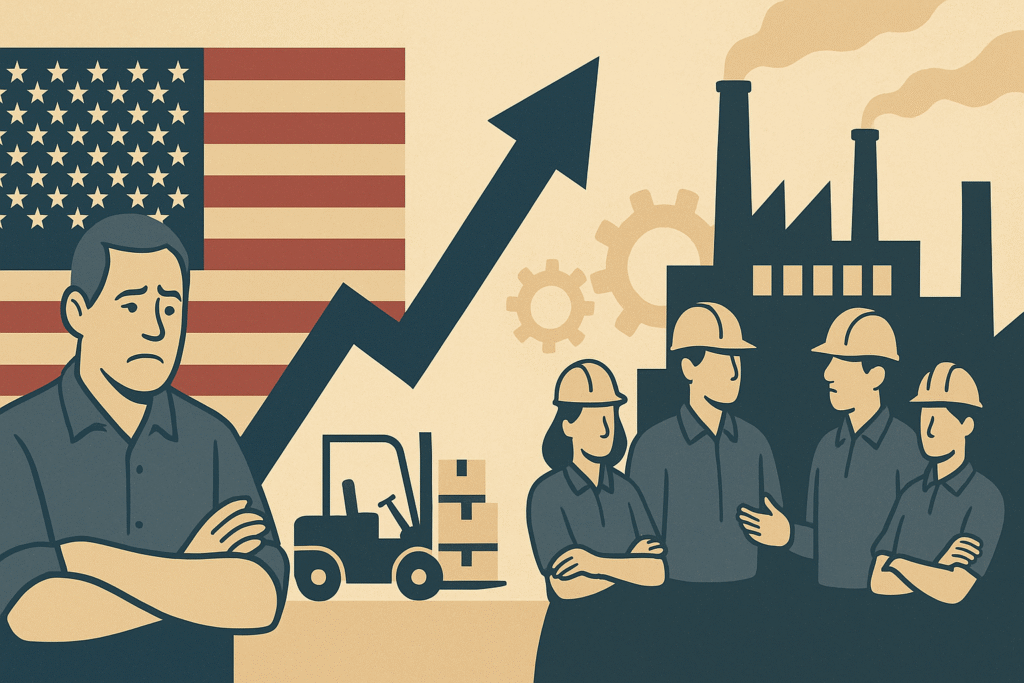As the U.S. government pushes to bring back manufacturing through aggressive tariff policies, questions are emerging about the country’s readiness to meet the demands of such a shift. While tariffs are intended to encourage domestic production, the reality on the ground—labor shortages, infrastructure challenges, and rising costs—paints a far more complex picture.
The Labor Crisis on the Factory Floor
Lisa Winton, CEO and co-founder of Winton Machine in Atlanta, has been searching for a qualified salesperson since March. The need for machinists is even more pressing—one position has been open for over a year with barely a dozen applicants, none fully qualified. Despite outreach efforts to technical colleges, flexible scheduling, and rehiring retirees, Winton continues to face a staffing crisis.
“If more factories open in the area, they’ll compete with us for the same limited labor pool,” she warns. Her concern is not unique. Nationwide, manufacturers face similar obstacles in hiring skilled workers—an issue that threatens to derail efforts to boost domestic production.
Trump’s Tariff Vision vs. Manufacturing Realities
Former President Donald Trump has championed tariffs—ranging from 10% on trade partners to as high as 50% on steel imports—as a tool to revive American industry. His administration has argued that tariffs will incentivize companies to produce domestically and reduce reliance on foreign imports.
Trump’s adviser Peter Navarro described the ultimate goal as fostering local production without tariffs for companies operating within the U.S. “That’s the endgame,” he said.
However, experts remain skeptical. Nancy Qian, an economist at Northwestern University’s Kellogg School of Management, cautions that this vision is “not realistic,” especially given the significant barriers to reshoring production.
Building Factories: A Long-Term Endeavor
Constructing a new manufacturing plant in the U.S. is neither quick nor simple. Erin McLaughlin of the Conference Board outlines the lengthy process: selecting a suitable location near transportation and utilities, acquiring permits, purchasing equipment, and finally, beginning construction—a process that can take three to ten years depending on the sector.
Infrastructure deficiencies add to the delay. The U.S. earned a “C” grade in 2025 from the American Society of Civil Engineers. Even if federal approvals are fast-tracked, local and state regulations remain hurdles. Jeff Bischoff, an executive at factory construction firm Gray, points to a growing problem: “Power generation isn’t keeping up with demand.”
The Workforce Gap
A persistent skills shortage further complicates the manufacturing resurgence. Despite an 11% rise in the number of manufacturing establishments from 2019 to 2023, job numbers have stayed largely flat. Automation has reduced the need for labor in some cases, but even modern factories require highly trained workers.
By 2033, Deloitte estimates the industry could see 1.9 million unfilled positions. Aging workers make the problem worse—over a third of manufacturing workers are 55 or older. Younger generations, influenced by the stigma of factory work and encouraged to pursue college degrees, are reluctant to enter the field.
“There’s a mismatch between what the industry needs and the skills people have,” said Rachel Sederberg of labor analytics firm Lightcast. Although vocational program enrollments are rising, they still fall short of demand. For instance, Texas saw just 400 machinist program graduates in 2023—far below the 16,000 job openings.
Wages, Perception, and the Appeal of Trade Work
Manufacturing jobs can offer competitive wages, but concerns about job stability, working conditions, and career progression deter many young workers. As of 2018, average hourly pay for manufacturing workers was still below the national average across all industries.
Carolyn Lee of the Manufacturing Institute notes that “not every job requires a degree, but every job does require skills.” Some certifications take just days, but others, like maintenance technician roles, require up to four years of training.
Automation and the Future of Factory Jobs
Labor costs in the U.S. are significantly higher than in competitor nations. A machine operator’s annual salary is nearly $45,000 in the U.S., compared to $15,000 in China and $5,000 in Vietnam. These costs, coupled with higher tariffs on imported parts, may accelerate automation trends.
“Companies are inclined to invest in robots and machines rather than pay high wages,” said Professor Farok Contractor of Rutgers University. Still, automation doesn’t eliminate jobs—it changes them. There’s growing demand for engineers, designers, and software specialists to operate and maintain modern equipment.
Nearly one-third of U.S. manufacturing workers now hold at least a bachelor’s degree, up from 22% in 2006. “I think we have the people,” said Winton. “Do we have the skillset? That’s the question.”
Conclusion: A Rocky Road Ahead
The Trump administration’s plan to reinvigorate U.S. manufacturing through tariffs and infrastructure development may face significant headwinds. Labor shortages, inadequate infrastructure, regulatory complexity, and the high cost of domestic production all pose serious challenges.
While some growth is possible, experts agree that expecting a full-scale revival of the sector within two years is highly optimistic. The U.S. may indeed bring some manufacturing jobs back, but without a major investment in workforce development and infrastructure, the dream of a manufacturing renaissance may remain out of reach.


